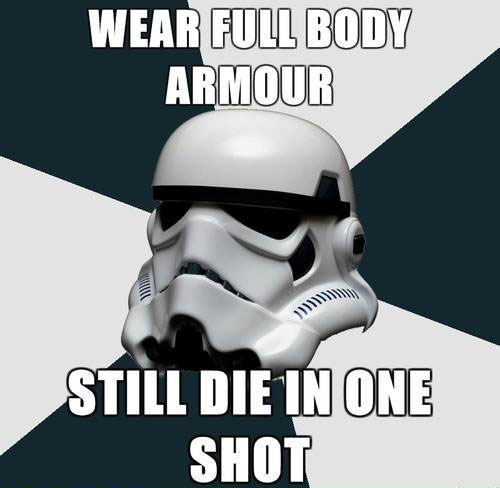So, I saw a bumper sticker on Monday morning that cracked me up.
Take a look
Haha! Vote for Obi-Wan Kenobi “Our Only Hope”.
And then I went to work. And through conversations and emails with
teachers, administrators, coaches, and district staff, I heard a lot of anxiety
about the upcoming middle school midterm exams and the high school semester
exams.
- What is on the exam?
- What should my kids study?
- How can I prep my students?
- How should I make a study
guide?
- Are we ready?
With Obi-Wan Kenobi as my only hope in my mind, I thought about
what might be OUR hope as we prepare for high stakes tests coming to so many of
us next month.
(Help me, Obi Wan Kenobi. You’re my only
hope!)
I don’t think we have an ONLY hope. Not just one Obi-Wan. I think
that we have several tools and Obi-Wans that should give us hope. What are they
and how can I use them? Let’s look.
- If we have followed our
curriculum guides, the force will be with them.
 Our
curriculum guides were written by PCSB teachers with benchmarks and test
blueprints in hand. They weren’t decided by “those people” at the district or
state..
Our
curriculum guides were written by PCSB teachers with benchmarks and test
blueprints in hand. They weren’t decided by “those people” at the district or
state..
2.
If we have stayed on pace, the force will be with them.
Again, our pacing guides were written by PCSB teachers with curriculum guides
and benchmarks and test blueprints in front of them. They were crafted by
regular teachers at PCSB schools who were trying to teach all the benchmarks in
the best time frame. Standards and benchmarks are dictated by the state DOE.
Our colleagues did a great job putting those benchmarks into the most do-able
calendar they could.
3.
If we have spent time in our blueprints, the force will be
with them.
Our blueprints tell us what is on the test. If you have spent time digging into
that, you know what’s on the test. You know which benchmarks are assessed, how
many questions are on each benchmark, and how many questions per benchmark are
at each level of complexity.
4.
If we have broken down our benchmarks, dug into what each is
really asking for and taught the benchmark instead of the topic, the
force will be with them.
Our kids
are assessed on their benchmarks, not their broad topical content knowledge.
So, they need to understand the benchmark, not everything about the topic. They
need to (SS.912.A.4.1)Analyze the major factors that drove United States
imperialism, but they don’t need to know the minor factors or the details
behind those factors.
Can you exhale a little yet? If you have been doing all the things
that Linda and Matt and your department head have been telling you, your kids
(in general) should be ok. The force will be with them.
 For those of you who are still nervous and feel the need to take
additional action, we still have time to use the force...
For those of you who are still nervous and feel the need to take
additional action, we still have time to use the force...
Help me, Obi-Wan Kenobi! You’re my only hope! I have two
suggestions to help you better get the force to be with your kids.
- Stimuli
 Give your kids more and more
practice analyzing and interpreting stimuli. In your
Give your kids more and more
practice analyzing and interpreting stimuli. In your
assessments, the term
“stimulus” will refer to maps, charts, graphs, document excerpts, images,
political cartoons, quotes, or graphics. Most of the assessments for required
SS classes are modeled after the state EOCs which ask for roughly 70%
stimulus-based questions. So, throw some stimuli up on the screen or board for
bellwork or exit slips. Slip more stimuli into reading assignments and
class activities. Use more stimulus-based questions on your classroom tests,
quizzes, and formative assessments. The more comfortable and familiar and
skilled your students are in dealing with stimuli, the better they’ll handle
the tests.
- Higher order questions. So, the
questions on the test are one of three levels of complexity.
Level one
is recall level.
Level two
is moderately complex (two-steps of thinking).
Level
three is high complexity (multi-steps of thinking).
Our state EOCs and many of
our district-developed EOCS are written at a 20-60-20 ratio. Meaning, 20% are
level one questions, 60% are level two questions, and 20% are level three
questions. Your Civics and HS US teachers should be able to rock this. The rest
of us aren’t quite as confident in our figuring out which questions are which
level.
It would be nice if we had practice questions, like a question
bank we could use, huh?
 So here’s the last battle you can do. You can come to the “Up Your
Game Assessment” PD on Dec 2 (the Tuesday after Thanksgiving Break). High
school is a 3pm. Middle school is at 5pm. We will spend some time discussing
and going over the levels of complexity and how to write Level 2 & 3
questions.
So here’s the last battle you can do. You can come to the “Up Your
Game Assessment” PD on Dec 2 (the Tuesday after Thanksgiving Break). High
school is a 3pm. Middle school is at 5pm. We will spend some time discussing
and going over the levels of complexity and how to write Level 2 & 3
questions.
Then, we’ll write some questions and put them in a question bank
that we can all use.
The more people there at the training, the more questions
we have in our question bank. It’s that simple.
So, as you plan for your week off and maybe give a thought or two
to what your world looks like when you come back, please consider coming to the
“Up Your Game Assessment “ training on Dec 2. It will help you, in your
classroom, to write classroom test questions that look like higher-level EOC
questions. But it can help all of us in writing those question bank questions
so we can use them in the few weeks before the assessments.
I’m attaching the flyer so you can sign up on LMS. If you
bring a friend, you can qualify for door prizes. The more folks we have, the
better shape we’re all in, test-wise.
Help me, Obi-Wan Kenobi! Help me, colleagues, and friends! You’re
our only hope!
-Tracy